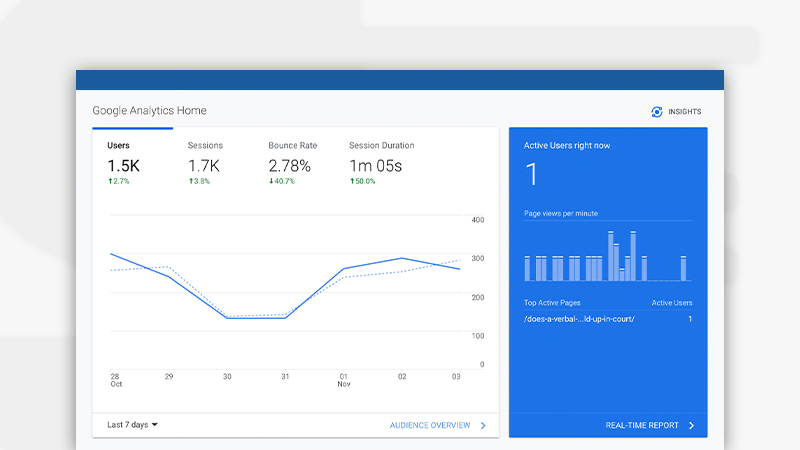Content writing is one of the most difficult desk jobs out there, but it’s rarely seen this way. The simple matter is, content execs don’t sit down at 9 o’clock every morning and just write constantly until it’s time to go home. There’s a lot of graft that goes on behind the scenes that people don’t see.
I’ve been writing blogs and articles online for around two years now, and even I didn’t realise how much goes into creating content when I first started. Realistically then, how can I expect anyone else to know how much effort writers put into their posts unless I tell them?
Well, I can’t. That’s why I’ve decided to write this blog so that you can get a better understanding of the process of making one…
The Light Bulb Moment

The old saying goes, “write what you know,” but when so many people have already written on your chosen subject, you need to find a new angle or a new talking point that no one else has done in order to stand out.
This is why, before we even think about writing actual content, we do a team brainstorm which we call a ‘content workshop’. By combining all of our thoughts and ideas together, we’re more likely to come up with some top-notch titles and blog ideas.
More often than not, we know when we’ve had that light bulb moment when there’s a killer keyword in the title (we’ll go into this in more detail later on). We’ve pretty much learnt what ‘kinds’ of words are going to do well in terms of keyword rankings, and the same for those that won’t, but don’t panic, this comes with experience.
In the same breath, however, your post has to offer something different to the millions of others out there. The first thing we do when we’re in a brainstorming session is to look at the problems our clients’ customers have. By providing the answers to the issues their customers are having, we’re putting them first. This is the key to standing out and providing content that will actually be of use to potential customers.
More often than not, companies tend to write their blogs by putting themselves first, and bragging about how great they are as a company. When in actual fact, the prospect customers want to know how they’re going to benefit from using the services or products — they’ll be the judge of how great you are (or not) pretty sharpish, let me tell you.
What’s the Word We’re Looking for?

After thinking of a great idea, the next thing to do is to make sure web users are able to find the post on search engines. We do this through keyword research.
Keyword research shows us what terms people use when searching for your type of content on the internet. To get your site ranking high on a SERP (Search Engine Results Page), we have to find the right phrases that have a high enough search frequency but a low competitor score. This way, web users will see your site at the top of Google when they search for a specific term.
We use SEMRush to source our keywords and believe me when I say, it can be a bit of a lengthy task, and essentially, it’s a balancing act to get all the components spot on. Because of this, it’s vital that you dedicate at least a couple of hours to the process.
Think of it this way, if you manage to find yourself a cracking keyword, the rest of the process in terms of rankings will be a breeze. However, if you don’t, you might find yourself having to go back to the keyword in the future to see if it can be tweaked a little in order to attract more traffic.
Of course, not all keywords are guaranteed a top spot (even if you were to dedicate a week doing it), so it’s about using some good old common sense to make a decision on where your time is best spent.
Doing our Due Diligence

Once you’ve (eventually) got your keyword, it’s time to start thinking about the actual writing process. However, before you can start writing, you need to make sure that you’re up to date with all of the relevant information surrounding that subject (and yes, every fact, figure and process must be accurate).
At Strawberry Forge, we don’t use Wikipedia as a fact-checker, or anything like that. We get our information from reputable sites and run our blogs by our clients before anything is published. This ensures our research is as accurate as possible.
Ultimately, by doing due diligence, your company will be able to build a trustworthy reputation and turn potential clients into confirmed clients, and that’s what we all want, right?
What’s the POA, then?

Yes, we’re talking about the plan of action. Remember the old saying: “if you fail to prepare then prepare to fail.” Launching into writing a digital marketing blog posts without any idea where you want to go with them is one of the biggest mistakes we see people make.
Every point mentioned needs to be relevant to the topic and has to lead to the end goal of establishing your company as a knowledgeable and trustworthy brand. Otherwise, you’d end up with a blog post full of useless anecdotes and tedious waffle that won’t help the reader at all. Worse than that, though, it could make readers look towards your competitors instead of you.
The Fun Stuff (Writing)

We’ve done it! We’re finally at the point where we can get our little fingers tapping on the keyboard at lightning speed.
This is the part where we can combine everything that we’ve been working on, from keyword research to getting our head around the blog topic.
What we like to do at Strawberry Forge, though, before we get into the full swing of writing is to figure out a structure. This might be writing out specific areas that you wish to cover in a particular order, or it might be coming up with punchy headlines that your content can follow.
Either way, having a good structure in place before you begin to write is not only going to help you, as the writer to keep on track with where you’re up to, it will also help the reader to get a more chronological understanding of the overall topic in question.
Once you’ve smashed the structure plan and you’re beginning to feel confident in what you’re going to be writing in each section, you can let your eager typing fingers free!
So, you’ve completed your blog, and you’re feeling pretty good with how it looks, but what will a fresh pair of eyes think?…
Next Up: Proofing

Accurate representation of Georgie after hearing about my love of em dashes 10 times a week
It’s important to bear in mind that nobody is perfect. Even if you see yourself as Shakespear II, it doesn’t mean you’re not going to make the odd mistake here and there. This is why us guys at Strawberry Forge send our blogs to all of the team to give them a thorough once over.
In this proofing stage, there might be an issue with the structure of the blog that needs re-working. However, it might just be a case of sorting out some typos and some grammatical mistakes — easy stuff!
Nevertheless, this process is going to ensure that the blogs you’re sending out to clients are at the highest quality possible. After all, without high quality work, how are you ever going to ace your brand’s reputation?
Getting a Round (of Edits) in

Well, we can’t just point out where we’ve made errors and leave it like that, can we?
After proofreading, the blog goes back to the writer so they can go through the points that have been raised. Once the necessary changes have been done, the blogs go through another proofreading session to make sure the new content works with what was already written.
And, maybe there’s another round of edits after that…
The Dress Rehearsal

We’re getting close to the finish line now. The blogs have been written, proofed and edited, and they’ve been given the big thumbs up by the client. The next step is to get them ready for publishing.
In a simple, better world, all that we’d need to do here is copy-and-paste the blogs from a word processor onto your website, but nothing is ever that easy.
When adding the content to your site, we need to check the format hasn’t shifted. It’s not uncommon for huge chunks of white space to appear between paragraphs, so we go through the text and remove them. After that, we check that all the internal and external links are working properly, too.
Image Sourcing
Then we move onto sourcing the images for the blog. The images we use are from Pixabay, Pexels, and Unsplash and are licence-free, so you don’t have to worry about getting chased up for royalty payments.
However, finding several high-quality images that are actually suited to your blog is far more time-consuming than you may have taken into consideration. We can tell you from our own experience that finding the right image takes some serious creativity over what you’re typing into the search bar.
For example, finding images which are suited to the blog named: ‘What Are the Legal Rights of a Disinherited Child?’ Is likely to be a real tricky one (and believe us when we say, it really was).
So all of the content is on the website, our images are sourced and placed in the correct places, now what?
Now, we want to make sure that we’ve scheduled the post in for the correct day and time on our website. If our client also has social media posts to go alongside the promotion of this blog then we scheduled these for the appropriate date and times with a link to the blog as well.
Almost there now folks, one last step to do…
Optimised for Performance

Now, we’re at the last stop on the blogging journey. The only thing left to do is the post’s SEO analysis. We do this to give your post the best possible chance of being picked up by Google.
To do this, we first have to write your page’s SEO title, URL and meta description. They all need to relate back to the keyword we researched way back in the beginning to have a good chance of ranking high.
Finally, we double-check whether the keyword has been used enough times in the body of the text and within the page headers. There’s a fine line, though, between using a keyword properly and stuffing it into every sentence possible, so don’t expect it to pop up at every opportunity. Google algorithms will actually penalise you for doing this.
And That’s Everything
So now you know! There’s a lot of work and effort that goes into making a blog post. Writing isn’t simply a matter of sitting down at your desk and getting on with it. Well, it isn’t if you want your blogs to serve a purpose, anyway.
Effective blogging is not a straightforward process, and it takes a team (not a one-man band) to get the job done effectively.
If you’ve been intrigued by this blog and want to know more, we’ve got good news for you. We’re currently in the final stages of developing an eBook wholly dedicated to making a blog, and the wider process — watch this space!
In the meantime, though, if you have any questions you’d like to ask us about blogging or anything else, please get in contact with us for a chat today.







